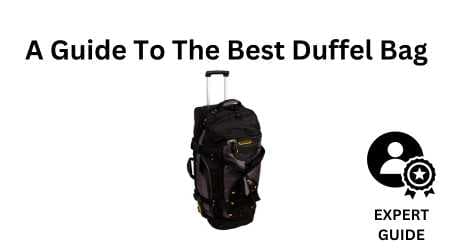
Best way to grate cheese is by using a sharp box grater or a food processor with a grating attachment. For hard cheeses, chill them before grating to make the process smoother.
Grating cheese might seem like a straightforward task, yet optimizing the process can vastly improve your culinary experience. A box grater typically offers various sized holes for different grating needs, making it a versatile kitchen tool for cheese preparation. For softer cheeses, letting them freeze slightly can help maintain their shape during grating.
Electric graters and food processors are excellent for large cheese quantities, saving time and effort. These gadgets are especially useful for those preparing meals in a hurry or for large gatherings. Always handle graters with care to avoid injuries and get the most from your cheese without waste. Whether you're topping off a dish with parmesan or prepping mozzarella for a pizza, the right grating technique is crucial for texture and flavor distribution.
Choosing The Right Cheese
Choosing the Right Cheese is essential to mastering the art of grating. Whether you're topping off a homemade pizza or adding the final touch to a gourmet mac and cheese, selecting the appropriate cheese variety makes all the difference. Learn how each type's texture and melting characteristics can influence your cooking.
Hard Cheeses
Hard cheeses like Parmesan, Pecorino, and Asiago require a fine grater for that perfect powdery sprinkle. They add a sharp kick to dishes. A box grater or a microplane works best for these cheeses.
- Parmesan: Ideal for grating over pastas and risottos
- Pecorino: Great for a saltier, more robust flavor
- Asiago: Offers a nuttier note to your meals
Semi-soft Cheeses
Semi-soft cheeses such as Cheddar, Gouda, and Mozzarella are versatile for grating. They melt beautifully and are perfect for a gooey cheese pull. Use the larger holes of the grater for these.
| Cheese | Characteristic | Use |
|---|---|---|
| Cheddar | Mild to sharp flavor | Burgers and sandwiches |
| Gouda | Rich and buttery | Baked dishes |
| Mozzarella | Creamy and stretchy | Pizzas and lasagnas |
Soft Cheeses
Soft cheeses such as Brie, Camembert, and Feta are often too delicate to grate but can be crumbled or sliced thinly to enhance flavors. They add creamy texture and depth to cold and warm dishes.
- Brie: Slice for a creamy addition to crackers or bread.
- Camembert: Spread on a warm baguette for a rich experience.
- Feta: Crumble over salads for a tangy punch.
Grating Tools
Everyone loves a cheesy dish, but grating cheese can be tricky. Grating tools make the job easier and quicker. Let's explore the best tools for turning a block of cheese into fluffy shreds for your favorite recipes.
Box Graters
The box grater is a classic tool in the kitchen. It stands upright and offers multiple grating surfaces. Each side has different sized holes for coarse or fine shreds. Box graters often include a slicer side too.
- Sturdy and stable for quick grating
- Multiple grating options in one tool
- Usually feature a handle for safe use
Microplane Graters
Microplane graters are slim and sharp. They originated as woodworking tools. Now, they are favorites for zesting and finely grating cheese. Here’s why:
- Create powdery shreds ideal for melting
- Easy to handle and store
- Requires less force, so less chance for accidents
Rotary Graters
Rotary graters are fun and easy to operate. Perfect for table-side service, they keep fingers away from blades. Chefs and diners can grate cheese directly over their dishes.
| Feature | Benefit |
|---|---|
| Enclosed grating drum | Enhances safety |
| Handle turns to grate | Effortless use |
Each tool shines in different situations. Choose the best one for your needs, and grating cheese will be a breeze.
Preparing The Cheese
Let's talk about the best way to grate cheese seamlessly. Cheese needs proper handling before it meets the grater. Knowing how to prep your cheese makes the task easier and the results more delightful. Get those blocks ready; we're about to dive in.
Room Temperature
Why start with cheese at room temperature? Room temperature cheese is less crumbly. It is also easier to hold. This leads to a smoother grating process. Follow these steps:
- Remove cheese from the fridge.
- Let it sit out for about 20 to 30 minutes.
- Check if it's pliable enough for handling.
- Proceed to grate once it's at the ideal texture.
Cold From The Fridge
Sometimes we're short on time. Need cheese grated right away? Use it cold from the fridge. This is great for hard cheeses. They hold their shape and shave off nicely. Here's the best approach:
- Choose a hard cheese variety.
- Grab it directly from the fridge.
- Use a sharp box grater for best results.
- Apply even pressure as you grate.
Grating Techniques
Ever wondered what the best way to grate cheese is? Perfectly grated cheese can elevate any dish, from pasta to salad. Grating Techniques vary, but choosing the right one makes all the difference. Below, explore the effective motions that churn out beautifully grated cheese with ease.
Up And Down Motion
The up and down motion is a common technique for grating cheese. Ensure you hold the grater firmly and grate in a vertical movement. This method works best for hard cheeses like Parmesan. The benefits of this technique include:
- Even shreds that melt uniformly.
- Less effort due to gravity's help.
- Controlled grating prevents accidents.
Back And Forth Motion
Another effective technique is the back and forth motion. This method requires a side-to-side movement and is ideal for softer cheeses like Cheddar. The consistent rubbing motion creates a pile of perfectly grated cheese. This technique's key points are:
- Allows for quick grating of softer cheeses.
- Hand motion is less tiring for larger batches.
- Produces fine, fluffy shreds suitable for toppings.
Avoiding Cheese Clumping
Grating cheese can often lead to an annoying mess with clumps. Proper technique and a couple of nifty tricks will ensure a smooth, clump-free grate every time. Whether you're topping off a delicious pizza or adding the final touch to a pasta dish, no one likes to battle cheese clumps. Here's how you can avoid them:
Lightly Coat With Flour
Coating your cheese with flour is an effective strategy to prevent clumping. The flour absorbs moisture that causes sticking. Here's a simple guide:
- Measure a small amount of flour; you won't need much.
- Gently toss your cheese in the flour before grating.
- Shake off excess flour to eliminate any unwanted floury taste or texture.
With this method, the cheese grates effortlessly and separates into perfect strands. It works especially well for softer cheeses known to clump.
Freeze The Cheese
Another tip to guarantee easy grating is to freeze the cheese. Despite sounding counterintuitive, a brief chill can work wonders:
- Wrap your cheese block in cling film or airtight packaging.
- Place it in the freezer for about 20-30 minutes prior to grating.
- Once chilled, grate as usual.
The cold temperature temporarily hardens the cheese, minimising sticking and residue on your grater. This works great for cheeses that typically smear or clump at room temperature.
Remember, these tips will help you enhance both the texture and quality of your dishes. Say goodbye to clumpy cheese forever!
Frequently Asked Questions
Which Cheese Grater Type Is Most Efficient?
Traditional box graters are often deemed most efficient for versatility. They usually feature multiple grating surfaces for different cheese textures. A flat, handheld grater is easier to use for quick tasks and cleanup.
How To Grate Cheese Without Sticking?
To prevent sticking, chill the cheese first. Coating the grater with a light spray of cooking oil also helps. Use a swift up-and-down motion to keep the cheese moving and reduce friction.
Can You Grate Cheese In A Food Processor?
Yes, you can grate cheese in a food processor. Use the grating attachment and apply even pressure for uniformly shredded cheese. It's a time-saver for grating large quantities of cheese efficiently.
What's The Safest Way To Grate Cheese?
To grate cheese safely, use a cut-resistant glove. Hold the cheese securely and use a downward motion away from your hands. Always keep your fingers clear of the grater's surface.
Conclusion
Grating cheese can transform your dishes, making flavors pop. Mastering this skill ensures meals that impress. Consider cheese type, grater style, and personal safety. Think of these tips as your culinary co-pilots. Elevate your cheese game and taste the difference in every bite.
Happy grating!






A fascinating discussion is definitely worth comment. I think that you ought to write more on this issue, it may not be a taboo matter but typically people dont discuss these topics. To the next! All the best!!